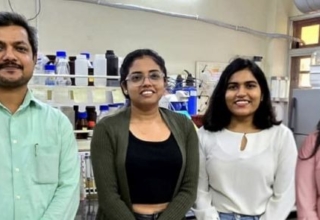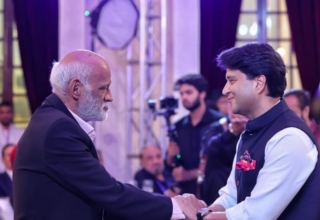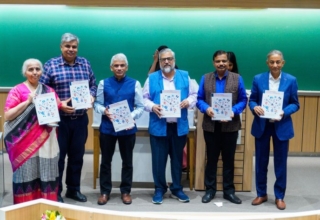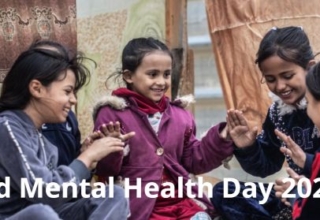
Independent of the draft NEP that carries a major recommendation of ‘achieving skill development among at least 50% of learners through school and higher education system by 2025 in order to realize full potential of India’s demographic dividend’, the state of Odisha has already hit the road by reimagining skills education for the socio-economic transformation of its people.

By Autar Nehru
The civilizational and mineral rich state of Odisha (pop 45 million) housing the sacred seat of Lord Jaganath (one of the four holiest Hindu divine sites) at Puri, has been also a sentinel of poverty narrative in the country with almost 33% of the state population living below the poverty line. Not many years ago, the haunted memories of hunger deaths in Kalahandi, were deeply entrenched into the memory and psyche of people and defined the pervasive harshness of this poverty in the state. The state having the third largest tribal population in the country accounts for 23% of its population, which again has been also associated with descriptions of exploitation and deprivation. Essentially, poverty and invisibility defined the perception of the state notwithstanding many successes of developmental upliftment, individual achievements, empowerment and modernization.

But that perception is slowly fading now. For the second time after Dilip Tirkey (the former Indian Hockey team captain and now a MP) catapulted Odisha’s public imagination of pride by leading the national hockey team, Aswatha Narayana Sanagavarapu, the first ever gold medalist in Worldskills from a country of 1.3 billion people is filling the hearts of young boys and girls of the state with joy and newer aspirations. Underneath this stellar achievement and welcome change is a horizontally spreading skill development landscape, which has just started blooming. Incidentally around this time, Odisha has become the only state in the country to sponsor nation hockey team for the next five years, again a statement for reclaiming its youth power .
The skilling ‘mission’ in the state has tasked itself to skill 1.5 million youth in next five years and importantly touch the lives of all those children and youth who due to various reasons either drop out of formal education system at various stages or don’t get into it at all, apart from making skilling central to human resource development, prosperity and the overall socioeconomic transformation of Odisha. The state has its own notional and traditions strengths in skills but instead of staying with it forever, the state has set its eyes on modernizing skilling ecosystem as well as the old mindset.
The state is also consciously trying to get past the popular stories about it being a state of plumbers or docile women knitting workers. For record, it may be mentioned that coastal district of Kendrapada which has become prosperous on the strength of about 100, 000 plumbers working in India and abroad after a group of villagers worked in water pipe installations Kolkata beginning around 1930s. Also, about half of the migrant apparel manufacturing workers in Tamil Nadu knitwear hub of Tirupur and other places comprises of women from Odisha at present. And, after the state has prioritized skill development in 2016, the narrative and delivery mechanisms have been chosen after a lot of research and international benchmarking.

In a broader sense, the Odisha skills education model rests on four major areas of focus. Reinvigorating vocational education & training provided by ITIs & Polytechnics, Focusing on Worldskills & other competitions to make skills aspirational among youth, Create & support an community of small entrepreneurs called as Nano Unicorns, and industry/placement linked skill development short term courses under central government and its own state level schemes & programs. Each of these focus areas has started off well and are now being scaled up for the real impact.

Surboto Bagchi, the chairman of the Odisha Skill Development Authority (OSDA) with a cabinet rank and a volunteer weekend secondary school teacher, is an inspiring person and a case study onto himself—first batch civilian in India to train as a paratrooper, who then actually took up the job of a government clerk only to give it up for a highly successful corporate career in IT industry and followed it up by cofounding hugely successful global IT services company, Mindtree (esb 1999, valued at over a $ 1 billion with 20,000 employees). Author of the very popular book, ‘Go Kiss the World’, Bagchi after winding up his corporate life in January 2016, responded to a call by chief minister, Naveen Patnaik, and came back to serve his home state in May 2016.
Ever since, but for three months (March-May) in 2019, he has been the brain behind the formulation of a new skilling vision and ensuing systemic or what he calls human transformation under the skills development mission of the state. And like a true missionary he has put his mind, body and soul into it. He sees Singapore as his motivation as well as the reason to believe that skilling pays prosperity dividend.
Bagchi has has moved some distance to emulate Singapore model and bring it into Odisha with a tie up with The ITE Education Services (ITEES), a wholly-owned subsidiary of the Institute of Technical Education (ITE), Singapore, which is now involved in ITI system and upcoming World Skills Centre. “When Singapore in 1965 reluctantly became independent after being thrown out by Malaysian parliament, the very existence of its people was at stake as it had no natural resources not even own potable water to sustain. Also, they didn’t have any skills and it was thoroughly impoverished. And then they turned to only resource they had, the human capital. Guess what, it was skills from countries like Germany, England and even India that made them what they are today—one of the most developed places in the world. It is their ITE system, our equivalent of ITIs, which was at the heart of this success. So, I see ourselves at their 1965 level and therefore relate to it,” says Bagchi, while explaining why he chose Singapore over traditional vocational education leaders like Germany, Japan, Switzerland, France, Korea etc.
In fact, OSDA has entered into a MoU with ITEES, Singapore to train its Technical and Vocational Education & Training (TVET) leaders (ITI principals and vice-principals on technical leadership with support of Temasek Foundation International and already 100 TVET leaders from 49 government ITIs in three batches have gone on a two-week educational trip cum training workshop to Singapore in 2018. Bagchi, has made it a point to share the Singapore story with every trainee batch going to that country. It has reason. Though he had frequented Singapore as an IT business honcho, he never had an idea of how is Odisha perceived or known in Singapore. So, after assuming work responsibility in OSDA, in a meeting with Singapore’s former deputy PM, Tharman Shanmugaratnam of Indian origin, he was literally shocked to hear ‘Where is Odisha?’ from the dignitary. “That inquiry showed us where we are and what we have to achieve. So, we had to sell the whole idea of Odisha and a lot of exchange visits before this arrangement happened. Of the 100 people, we sent to Singapore, 90 didn’t have passports and actually we had to organize an etiquette training workshop before they went. That showed the level of ambition among our people in leadership role at ground level,” he adds.
After the TVET leaders came back enlightened over pedagogy and other aspects, they were drawn into a discussion to make a vision and suggest strategies to reform their institutions. Eventually a mission, vision and values were arrived. The new mission adopted in 2018 calls for transforming society through skilled professionals, best infrastructure (physical, digital & intellectual) in the country, 30% girl enrolment, industry linkages, globally employable graduates, boosting entrepreneurships and importantly become warriors of planet Earth by leading sustainability with the values of human centricity, discipline, integrity, teamwork and creativity. These ITIs in the state are new branded as new ITIs.
The severe Fani cyclone that hit parts of Odisha on May 3, 2019 made ITI students a new entity of good Samaritans with a lot of public appreciation. A group of about 200 ITI final semester students were drawn as volunteers in restoration of public utilities and household repair work. In groups of 6-10, these teams fanned out in capital city of Bhubaneswar and elsewhere for about a week and wonderfully accomplished minor electric, plumbing and other repair work. This has happened first time in the state where cycles are like regular guests.
Government ITI at Berhampur (esb 1957) spread in 9.72 acres with an annual intake of 1700 in 26 trades is one of the best known ITIs in the country for placement record as well as various recognitions. It is being developed as a centre of excellence and model. A visit to the institution takes you to a new imagination. Being among the first chain ITIs after these were rolled out in 1957, it has also reminisces of that important momentous history, some old structures and equipment. More than that seeing teen boys and girls clad in beautiful uniforms sweating on machines, working as teams and immersed in their activities some with mentors oblivious of one another, the sight and little noise actually gives a calm and feel of a modern day gurukul. Smart class rooms, spacious industry size workshops, digital library, auditorium, playfield, hostels, campus abuzz with student activities in complete harmony—all makes it the experiential vocational education school. The high point is a craft museum made from mechanical, automobile and other metal scarp and waste. The ITI has made it to the Asia book of records with grandmaster certification for having making a 70 feet tall sculpted guitar from waste in August last year. A team of 150 students worked on it for 22 days. Like this, both small and large sculpture items are being created creatively by the students in their pursuit of experiential and immersive learning.

“We have given power to the students and it serves us not only to create and sustain student interest but also give them hands on training, interdisciplinary teamwork and real world situation problem solving understanding. We have redefined recycling model by adding aesthetics and value to waste materials. This is being appreciated a lot and in future, I am sure will be part of entrepreneurial mindscape,” says Dr Rajat Kumar Panigrahy, principal of ITI Berhampur, who was part of the first batch of TVET leaders to go to Singapore.
Bagchi has passionately championed the cause of girl students getting into the vocational education and a target of 30% has been fixed for their inclusion. The results have started showing up. For instance at Berhampur from a small group of 61 girls in 2016, in 2018-19 session, 300 girl students were admitted. “Under the new vision, we are organizing tours of secondary and senior secondary school girls from neighborhood areas to our ITI and exposing them to our offerings and work. These visits have made them aware about various career possibilities and importantly translated into the much needed motivation,” adds Panigrahy.
In fact much before the Singapore engagement, OSDA, has devised a strategy to rejuvenate government ITIs. Under this ‘Skilled in Odisha’ campaign was launched to create hall of fame and alumni profiles much like higher education institutions. ‘Skilled in Odisha’ photograph-posters of ordinary skilled people in various trades were put on buses, office galleries to recognize their role and also send out a motivating communication in the society.
Now, every ITI is supposed to display its hall of fame or roll call honor will typically aim to have 10 outstanding alumni on it to take pride in its output. Out of 10, six will be working outside the state, four will be girls and two will have become small entrepreneurs. “At 14, there is a natural tendency to look for a role model for feeling or looking good in children. At bottom of pyramid at this age group these role models are missing and we did an effort by this campaign. Also, NID (National Institute of Design, Ahmadabad) was involved to make design for uniforms for both boys and girls to instill confidence and self- importance in them, which is now common throughout the state,” says Bagchi. The celebration and events at ITIs have also been made at par with big events in schools.
Digital content, life as well as soft skills are another new to ITI turn around in the state. For this purpose, Tata Strive of the Tata Community Initiative Trust has been signed as a partner, which employs its teachers referred to as ‘change leaders’ in ITIs to transact communication skills as well as life skills. Tata Strive has also produced curriculum for these skills. “The good thing that has happened is that life skills and communication skills are part of curriculum and even if we are not there tomorrow, these skills will continue to be imparted as integral part of course programs,” says Sanjogita Mishra, Tata Strive’s senior manager, special projects (Odisha) heading state operations. Apart from bringing in experiential learning, the curriculum has modules on sustainability, safety, total quality management and design thinking. “Study of job roles, exhibitions and job fairs is also what we have added to provide students opportunities for self-exploration,” she adds.
After fixing its own ITIs and creating prototypes, ODSA, will now insist 350 private ITIs to follow suit to scale up qualitatively even as government will add another 23 new ITIs to make it 72 under government category in next one or two years. Parallelly, a set of advance skill training institutes (ASTI) will also start from 2020 academic session. The government has proactively pursued the transformation of technical institutes and has tried to streamline the weak links.
“Mindset about the system needed a change and by bringing in online examination and big technology platforms like Tata and Cisco, we have tried to improve the system and address some of the routine criticism,” says Sanjay Kuamr Singh, Commissioner-cum-Secretary to Skill Development & Technical Education Department, Government of Odisha. The result of this changed mindset became evident when Odisha Industrial Infrastructure Development Corporation or IDCO readily sold its 18-storey (half a million feet constructed area) originally meant as a commercial tower in Bhubaneshwar to OSDA at a cost of Rs 140 Cr. This landmark new building will now house World Skill Centre (WSC), which will be fully operational in July 2020.

A first in the country, ASTI to be opened in PPP mode with ADB support in WSC will mainly cater to futuristic and unique skills in eight trades from vertical transportation to hair fashion and design. One trade in a floor will have a capacity of about 150 students and there will be a live industry size and equipped laboratory or workshop where actual customers can avail services in due course of time. 15 floors are planned to be used like that. Each trade will be an autonomous unit with own academic head though there will be an overall principal. The centre will be initially run by ITEES, Singapore for two years.

As against the initially proposed eight centres at separate locations across the state, WSC will ensure all advanced training takes place under one roof as interdisciplinary skilling besides harmonize administration. “We want to make Bhubaneswar the sandbox of innovations in skills and WSC will fill in the already vibrant ecosystem that includes IIT, CIPT and others top institutions in the city. This will go a long way in making skills aspirational, motivate youngsters and also help us to emerge as a world class skills city,” adds Sanjay Kumar Singh.
Surboto Bagchi led OSDA has piloted another innovation of ‘nano unicorns’—the micro entrepreneurships, an ideation similar to silicon valley fame with far reaching impact if next phase goes well. Under this initiative 204 very small entrepreneurs have been identified by heads of ITIs and Skill Development Centers (SDCs) over the last two years and provided training with a 6-10 day workshop in business plan development, marketing and costing besides basic entrepreneurial skills and then given one-year interest loan upto Rs 1 lakh to set up a small business. The entrepreneurs are expected to generate 1.5 jobs in the first year. Centre for Youth and Social Development (CYSD), a citizens group, based in Bhubaneswar has been co-opted to handle and maintain a rotating fund of Rs 2 Cr generated from individual donors for servicing this loan. Now Tata Strives will be involved in scaling this up to first 1000 nano unicorns and then to 3000. At this point with a critical mass in place, the government will exit from this program and let it evolve naturally thereafter.
Interestingly while Bagchi says that the program is running as per the original thought, Jagannanda, cofounder of CYSD and former chief information commissioner of Odisha contradicts his claim. “It was after a daylong brain storming that we arrived at frameworks for identification of persons with entrepreneurial bent of mind and drive, linkages with institutions and financial support. We agreed on floating a ‘nirmana fund’ and took it up at the highest level of union government, but that didn’t happen. Eventually, we persuaded a few individuals to donate and all of us were clear to house this fund outside the government. But nevertheless, we materialized the idea,” he adds.
In Bagchi’s estimate while the formal technical institutes will comprise 20% of the skilling need, another 80% mostly dropouts or out of school children are the real challenge and needs immediate solutions. “There will be dropouts, no matter what you do or say about schooling, curriculum or processes because of the malnutrition and protein deficiency issue in early childhood , which hampers development of maths and language receptors in brain. Then there are socio-economic realities where a hungry stomachs more than education need instant livelihood,” says Bagchi. Therefore, need of job-linked skilling will continue to be high among a large number of youth to stay productive, and Odisha has hugged it a big way.
The execution of short-term skilling programs for youth ages 15-35 years of the Government of India like DDU-GKY and PMKVY is implemented with states. Apart from these schemes, the state has started its own short-term courses. What is heartening is the development of district level skill development centres (SDC) in all its 30 districts. These SDCs are fully equipped with physical infrastructure, classrooms, laboratories, hostels, toilets etc. The development of SDCs came in response to provision of residential training in these some of these schemes. Also, most of the training providers for these schemes are NSDC private partners, who usually have to rent premises to impart their training, building SDCs assured implementation of the schemes as well as meeting their norms. While these programs have been heavily criticized for being shoddy and running as number manipulations, OSDA, has taken this head-on. In addition to rigorous monitoring and transparency, the state is suing these amenities is being used to administer its own placement linked training programs (PLTP) and also rented out for training providers of central schemes. “The need for PLTP arose because DDUGKY is for BPL youth and our state then devised its own short term courses mechanism to support skill development of all youth. In this we hold mobilizing camps in every village and assure them free accommodation or travel and training and then a three-month stipend once they get employment,” says Phalguni Nayak, a nodal officer with OSDA. By assuring residential programs and linking it with industry demanded courses and established training partners, Odisha, is offering its youth opportunities to train anywhere in the state and then helping them to cope with initial job hiccups.

Skill development in Odisha is moving to the priorities of the government and there an understanding is building that skills create a lot of value. Under smart city project, OSDA is training its CRUT bus fleet 960 drivers and conductors in etiquettes and tourist guides. They now called bus captains and bus guides so as to instill pride in their roles and earn public respect. So, in next five years, this transformation will spread across the public utilizes and government services.
In conclusion, the government in Odisha has become convinced over the power of skilling for change and economic empowerment, and it has begun a quest in the right direction, piloted some groundbreaking modeling and remodeling and importantly is not chasing just numbers of their sake. As these models scale up and start impacting the society and economy in coming decade, India will be proud of this big experimentation and the consequential human capital. It will also provide a counter narrative to hopelessness about skills education scenario in the country.
(The feature story was written in autumn of 2019)










